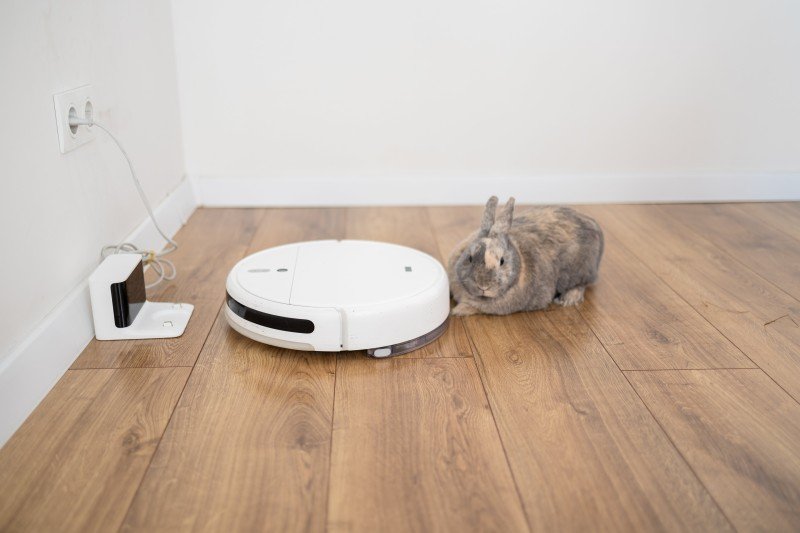Robotic Vacuum Explained In Less Than 140 Characters
The Rise of Robotic Vacuums: A Comprehensive Guide
In the fast-paced world of technological advancements, the combination of robotics into daily household chores has reinvented the way people maintain their homes. Amongst robot vacuum and mopping cleaner and useful developments is the robotic vacuum, a device developed to autonomously clean floors, decreasing the need for manual work. This post explores the evolution, performance, advantages, and future of robotic vacuums, offering a comprehensive guide for those thinking about adding one to their family.
The Evolution of Robotic Vacuums
The principle of a robotic vacuum go back to the late 20th century, however it wasn't until the early 2000s that these gadgets became commercially practical. automatic vacuum and mop robot acknowledged robotic vacuum, the iRobot Roomba, was introduced in 2002. Ever since, the innovation has actually advanced considerably, with contemporary designs featuring advanced navigation systems, effective suction, and smart home combination.
Key Milestones:
- 2002: Introduction of the iRobot Roomba – The first commercially effective robotic vacuum.
- 2005: Advanced Navigation – Integration of infrared sensing units and cliff detection to avoid falls.
- 2010: Wi-Fi Connectivity – Allowing push-button control and scheduling via mobile phone apps.
- 2015: Mapping and Zoning – Advanced mapping technology for more effective cleaning.
- 2020: AI and Machine Learning – Enhanced navigation and cleaning patterns through artificial intelligence.
How Robotic Vacuums Work
Robotic vacuums run utilizing a mix of sensing units, algorithms, and motors. Here's a breakdown of the key elements and processes:
- Sensors: These include infrared, ultrasonic, and optical sensors that help the vacuum detect obstacles, edges, and dirt. Some models also utilize electronic cameras for visual mapping.
- Mapping and Navigation: Advanced models utilize SLAM (Simultaneous Localization and Mapping) innovation to create a map of the cleaning area and navigate efficiently.
- Suction and Brushes: Robotic vacuums utilize effective motors to create suction and various brushes to choose up dirt and particles. Some designs include side brushes to reach into corners.
- Battery and Charging: Most robotic vacuums are geared up with rechargeable lithium-ion batteries. automatic vacuum cleaner and mop go back to their charging dock when the battery is low.
- Smart Home Integration: Many designs can be managed via smart device apps, voice assistants like Amazon Alexa or Google Assistant, and can be incorporated into smart home systems.
Benefits of Robotic Vacuums
- Convenience: One of the most significant advantages is the convenience of hands-free cleaning. Users can arrange cleansings or begin them remotely, allowing for a clean home without the effort.
- Performance: Modern robotic vacuums are developed to tidy effectively, covering big areas and navigating around challenges with ease.
- Long-Term Savings: While the preliminary expense might be higher, the long-term savings on manual cleaning tools and the time saved can be significant.
- Allergic reaction Relief: Regular cleaning can assist decrease allergens in the home, making it a useful financial investment for allergy sufferers.
- Eco-Friendly: Many designs are energy-efficient and use recyclable materials, making them a more sustainable cleaning alternative.
Popular Models and Features
iRobot Roomba i7+
- Features: Advanced mapping, automatic dirt disposal, Wi-Fi connectivity, and voice control.
- Cost Range: ₤ 600 – ₤ 1,000
Dyson 360 Heurist
- Functions: 360-degree video camera for mapping, powerful suction, and HEPA filtering.
- Price Range: ₤ 600 – ₤ 800
Ecovacs Deebot Ozmo T8
- Features: TrueMapping navigation, mopping abilities, and voice control.
- Cost Range: ₤ 500 – ₤ 700
Neato D7
- Functions: Laser navigation, big cleaning location, and app control.
- Rate Range: ₤ 500 – ₤ 700
Future Trends in Robotic Vacuums
The future of robotic vacuums is promising, with continuous advancements in technology. Some trends to expect include:
- Enhanced AI and Machine Learning: More advanced algorithms will allow much better navigation, obstacle avoidance, and cleaning efficiency.
- Integration with Smart Home Ecosystems: Increased compatibility with numerous smart home devices and platforms.
- Enhanced Battery Life: Longer-lasting batteries to cover bigger locations without needing to charge.
- Multi-Functionality: Beyond vacuuming, future models may consist of extra features like air filtration and surface area cleaning.
FAQs
Q: Are robotic vacuums as reliable as standard vacuums?A: While they might not be as powerful as high-end conventional vacuums, modern robotic vacuums are extremely efficient for routine cleaning jobs. They are particularly beneficial for keeping a clean home between deep cleans.
Q: How typically should I clean up the filters and brushes?A: It is suggested to clean up the filters and brushes after every few uses to ensure optimal performance. Seek advice from the user manual for specific upkeep guidelines.
Q: Can robotic vacuums navigate stairs?A: Most robotic vacuums are equipped with cliff sensors that avoid them from dropping stairs. However, they are not developed to tidy stairs.
Q: Are robotic vacuums noisy?A: Generally, robotic vacuums are quieter than conventional vacuums. However, sound levels can differ by design. Some designs use quiet cleaning modes for nighttime usage.
Q: Can I use a robotic vacuum with pets?A: Yes, lots of robotic vacuums are created to handle pet hair and dander. Search for models with strong suction and specialized pet cleaning features.
Robotic vacuums have actually come a long way since their inception, providing a hassle-free, effective, and environment-friendly solution to family cleaning. With continuous developments in innovation, these gadgets are ending up being more advanced and easy to use. Whether you're looking to conserve time, reduce irritants, or simply take pleasure in a cleaner home, a robotic vacuum is a rewarding financial investment. By comprehending the features, advantages, and future patterns, you can make a notified decision to improve your home cleaning experience.
